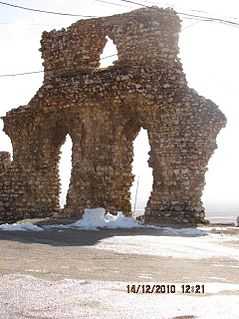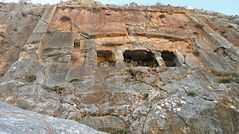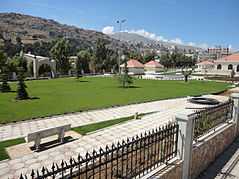Kabelias
|
Emblem of Kabelias - شعار قب الياس | |
| City of Kabelias - مدينة قب الياس | |
|---|---|
| Geography Information | |
| Distance from Beirut (capital) | 45 Km (away) |
| Distance from Zahleh | 15 Km (away) |
| Area | 32,000 m2 |
| Surroundings | |
| West | Falougha, Ain Dara, Bmuhrein |
| North | Bouarij, Mreijat, Makse, Jditah, Taanayel |
| East | Marj, Houche Al Harimah |
| South | Aammiq Wetland |
| Official Website | |
| http://www.kabelias.org | |



Kabelias (Arabic:قب الياس / ALA-LC: Qab Ilyās / Lebanese: [Abblyes]; also transliterated as "Kab Elias", "Qab Elias", "Qob Elias", "Qoub Elias") (Wadi Ed Delm [The upper south western part close to Ain Dara]) is a municipality in Zahle District, Lebanon. Kabelias is 15 kilometers from Zahleh and 45 kilometers (28 miles) from the capital Beirut. Its elevations is 950 meters (3,120 feet) above sea level. Its area is approximately 32 km². The majority of the residents are Sunni Muslims.[1]
Importance
Kabelias is the third largest city in the Beqaa valley, after Zahleh and Baalbeck in terms of area size and geography.
Name
Kabelias was originally called by a Phoenician name, but later changed to be called Kaber Elias ("The grave of Elias"). This was due to the belief that the prophet Elias was buried in the village. The name was later shortened to Kabelias.
Local governance
The municipality has a municipal council elected for 6 years. It has administrative and financial independence but remains under the control and supervision of the central government.
Population
It is estimated that 55000 residents live in Kabelias as of 2008, spread along several parts as follows. Kabelias Fawka, Kabelias Tahta, Wadi El Delm, Farm of Bmahray, Bahsasa. In the municipal Lebanese elections of 2004, it counted 14,602 registered voters, of which 8771 voted.
Prince Fakhreddin II Castle Ruins
It is believed that this castle was one of the largest castles in the Beqaa valley, it is also thought to have been built by the Druze Prince Fakhreddin II (فخر الدين الثاني) and he chose its location for the height and good defense against the opposing Ottomans. The castle was eventually destroyed by the Ottomans, but the ruins remain.
The Haidara Ruin
These ruins are believed to date back to the Roman Empire's presence in Lebanon. According to local legend, there was once a mirror on the face of the building, used to reflect sunlight down into the village, related to sun-worshipping Roman practices.
Sources
- Municipality of Kabelias - Wadi El Delm
- http://www.localiban.org/spip.php?article3745
- http://www.Kabelias.org
- http://www.Kabelias.net
